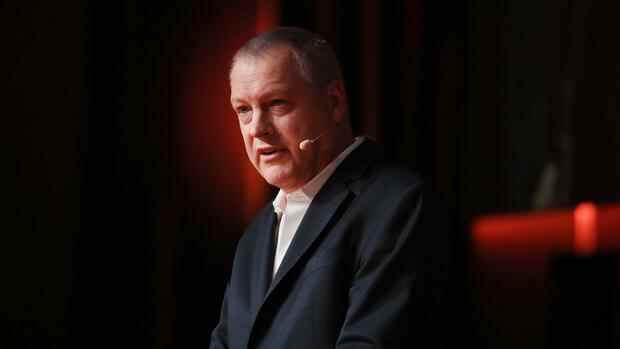Green hydrogen is the major topic of the future worldwide.
(Photo: Bloomberg)
Berlin Former Uniper CEO Andreas Schierenbeck started a new job on February 1: The manager is now a board member at HH2E AG. Behind this is a company from Hamburg with ambitious plans to start producing green hydrogen on an industrial scale.
“I have spent over 20 years in large, global organizations and dealt with their services and products, the introduction of innovations,” said Schierenbeck. “In these large companies, you have to deal with the often very slow change in their culture and their internal bureaucracy in a very time-consuming manner.” Now he wants to concentrate on what “has a direct and quick effect”. It’s about innovations, technologies and profitable business models that positively change the economy and society.
Schierenbeck took over the management of Uniper in June 2019 and surprisingly left in March last year. The electrical engineer was previously CEO of Thyssen-Krupp Elevator AG from 2013 to 2018.
His partner on the board at HH2E is Alexander Voigt, who is no stranger to the energy industry. Voigt has founded several companies over the past two and a half decades, such as the solar module manufacturer Solon, which he took public. He also founded the memory manufacturers Younicos and Lumenion.
Top jobs of the day
Find the best jobs now and
be notified by email.
Voigt and Schierenbeck now want to achieve great things together with their CFO Mark Page. Investments of 2.7 billion euros are planned in projects in Germany. Investors are ready, Schierenbeck assures us that we are “on the home stretch” with well-known infrastructure funds.
Key role in decarbonizing industry
Green hydrogen is the major topic of the future worldwide. It plays a key role in decarbonizing industry and will also play a pivotal role in heavy-duty, marine and air transport. In certain applications, such as in steel production or in the chemical industry, green hydrogen is the only way to switch from CO2-intensive processes to climate-neutral processes. Rapid growth in the production capacities of green hydrogen is forecast worldwide.
At the center of the plans by Schierenbeck, Voigt and Page is a zinc electrolyser for hydrogen production and a high-temperature storage facility. The storage unit can store large amounts of wind and solar energy in the form of heat at high temperature levels. According to Voigt and Schierenbeck, the electrolyser technology used enables a higher degree of efficiency than other electrolyser technologies.
Just four hours of wind or solar power per day are enough to guarantee constant production of green hydrogen. According to the initiators, the aim is to only use excess wind and solar power, which is available at particularly low cost. At the same time, the aim is to make a contribution to smoothing out the peaks in power generation and using them sensibly.
The promise of the initiators: As early as 2025, HH2E AG wants to be able to produce and deliver green hydrogen in Germany at the same prices that are only forecast for 2030 for green hydrogen from regions such as the Middle East or Australia. Those who produce locally have the huge advantage that costly logistics are no longer necessary, says Schierenbeck. The aim is to supply local industrial companies and municipalities with competitive green electricity, green hydrogen and process steam.
Hydrogen is no longer the “champagne of the energy transition”.
Schierenbeck, Voigt and their comrade-in-arms Page seem wildly determined to boldly scale up and venture into industrial dimensions. The time when hydrogen was called the “champagne of the energy transition” is finally over, says Schierenbeck. In the meantime, green hydrogen is understood as the “central key” for the implementation of the energy transition in all sectors.
The aim of HH2E AG is to build electrolysers for hydrogen production with a capacity of four gigawatts (GW) by 2030. This means that a significant part of the electrolysis capacity of ten GW in 2030 targeted by the traffic light coalition would go to Hamburg.
More: How LNG terminals want to go green
